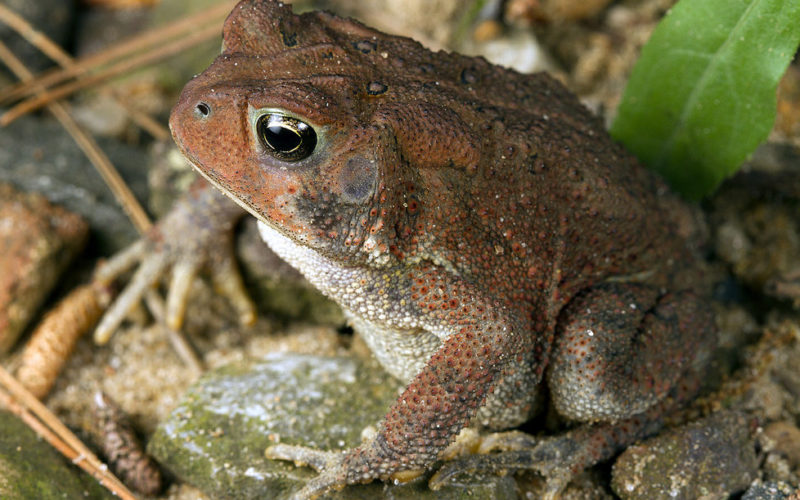Toads entertaining guests in Arkansas puddles
AMANDA BANCROFT
Making Ripples
If you happen to notice a rock that moves, it just might be a toad! We have several toad species native to Arkansas, including the dwarf American toad, Fowler’s toad, eastern narrow-mouthed toad and western narrow-mouthed toad. The only “true toads” are the American and Fowler’s, which can hybridize and be difficult to tell apart. The American toad is “our most familiar eastern hop toad,” according to “The Frogs and Toads of North America” by Elliott, Gerhardt and Davidson.
Their guidebook is lavishly illustrated with full-color photos and range maps. It comes with a CD to help you learn to identify the calls of frogs and toads in the neighborhood. But even the call isn’t always enough. The two species can create hybrid offspring whose calling sounds about in the middle of their parents’ calls. There is also a reddish dwarf American Toad that’s a couple inches smaller and truly adorable – it’s easy to mistake them as just baby toads instead of adults. Non-dwarf toads are usually two or three inches in size.
Toads have warts, called tubercles, that can vary in color and size but can’t transfer to humans (that’s a myth). They also have parotoid glands behind their eyes that produce a poison making them distasteful to predators that try to munch a toad snack! This toxin can make dogs and cats drool or vomit. Their appearance is short and squat, making them seem pudgy yet rocky with thick, bumpy skin. They look sluggish but can hop away quite quickly. Another feature is the lighter-colored stripe down the back, making it look like someone painted a highway line right down the center.
The American toad has a long trill that can last up to 30 seconds. It often sounds like music, with males trilling in chorus at different pitch and pattern. Males call during the breeding season for a couple of weeks in spring, and let the females find them! They may have to go in search of females or fight with other males once they find one. Siblings are likely to encounter each other because they return to breed in the pools in which they were born. Females can detect their kin partly by recognizing their calls, possibly similar to the way we recognize voices.
Eggs are strung together like black pearls inside a transparent necklace. Even a puddle is not too humble for a toad. Temporary bodies of fresh water ensure that fish and some other tadpole predators won’t be present. Toad eggs hatch in roughly a week depending on temperature, and the gilled tadpoles begin a new life. In 50 days, more or less, they mature to lose their tadpole tails and emerge as toadlets, the toad version of froglets. Even at this stage, predators learn to avoid eating an American toadlet!
They’re often found in urban and residential areas, catching insects that are attracted to porch lights. Maybe a toad will visit your porch during trick-or-treat on Halloween!
Amanda Bancroft is a writer, artist, and naturalist living in an off-grid tiny house on Kessler Mountain. She and her husband Ryan blog about their adventures and offer tips to those wanting to make a difference at www.MakeRipples.org.










